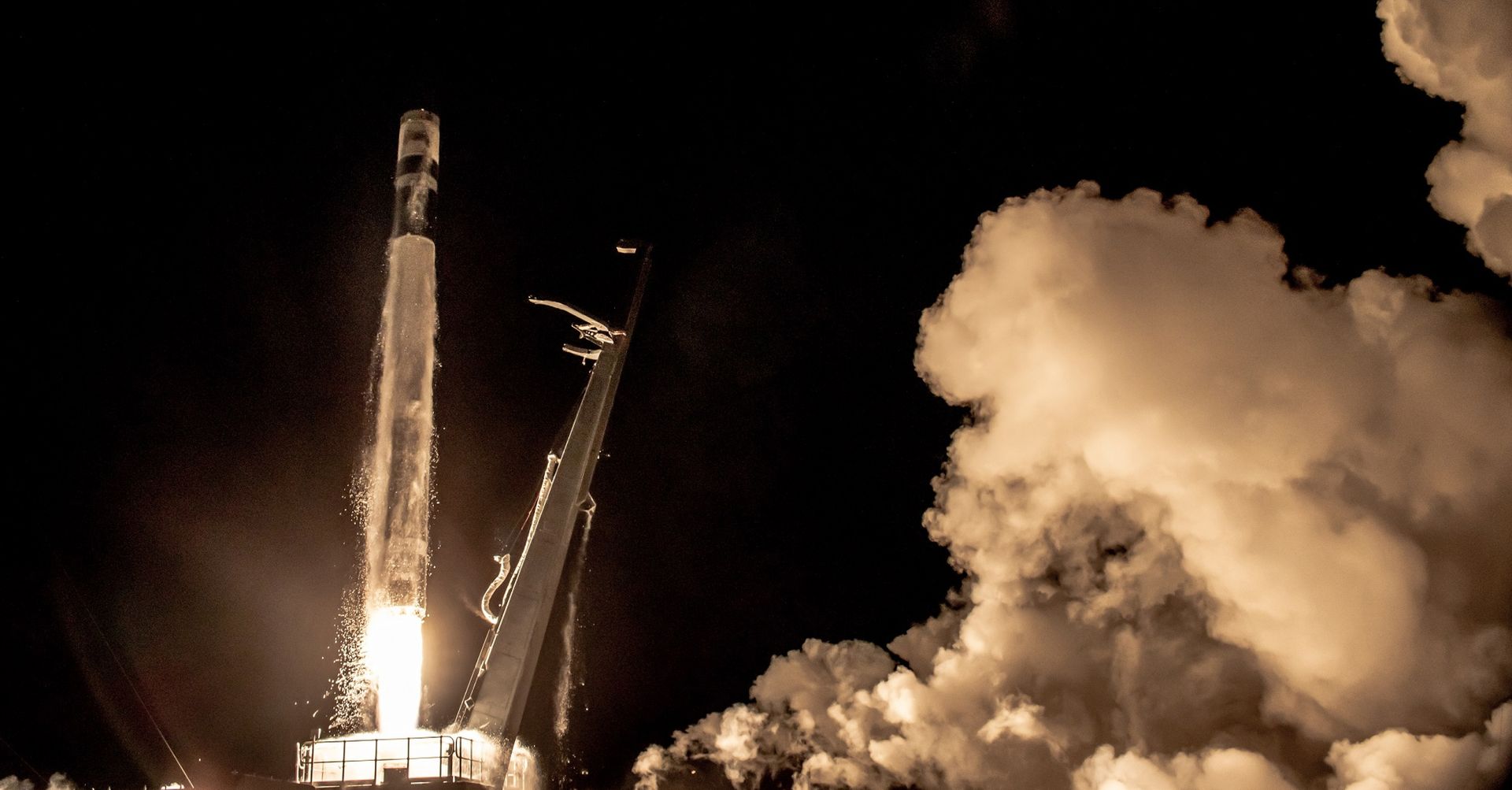
29 November 2024
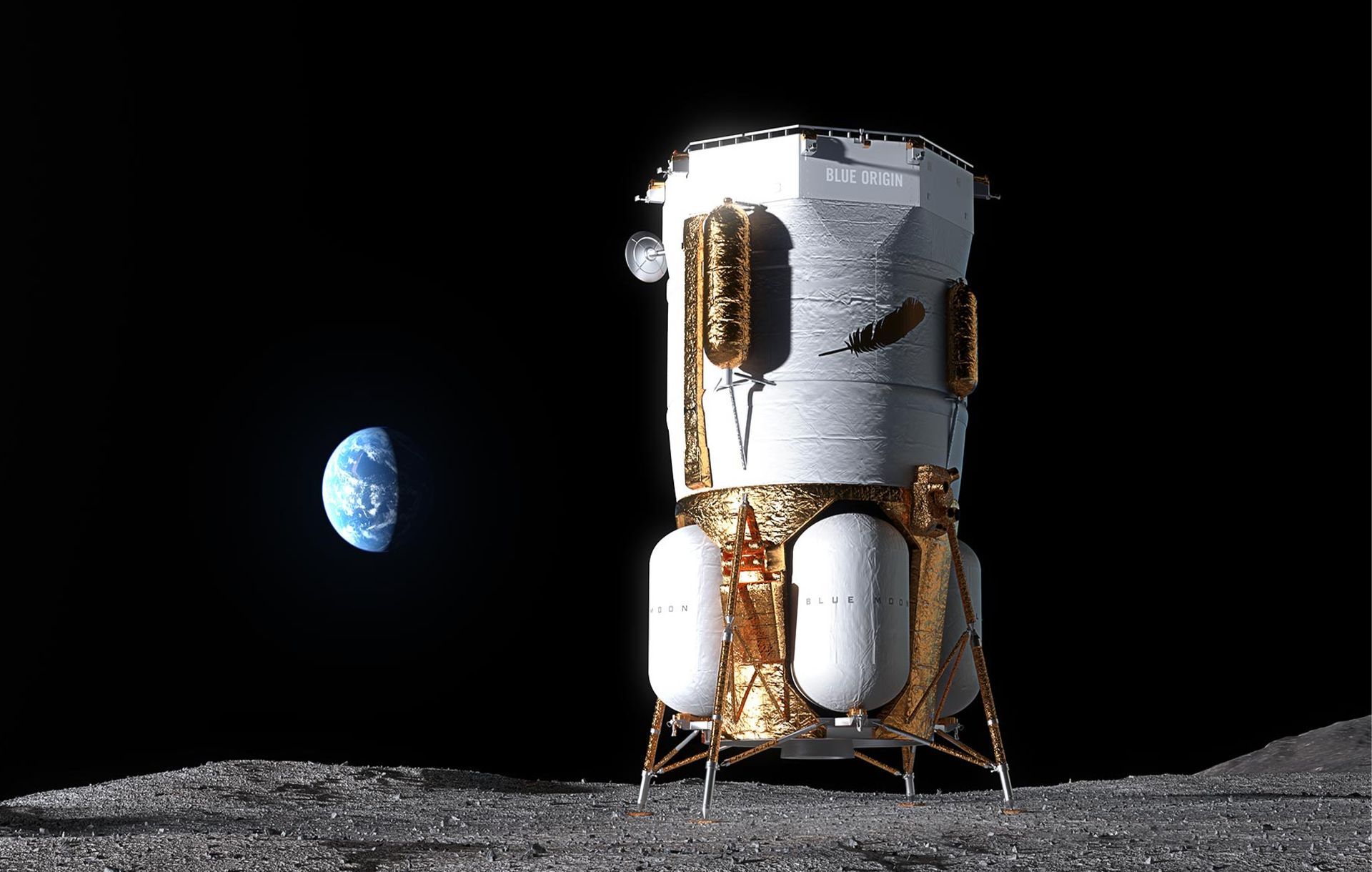
(Image: Blue Origin)
NASA has made significant strides toward establishing a sustained lunar presence under its Artemis program, recently announcing plans to use cargo landers from Blue Origin and SpaceX to deliver rovers and infrastructure to the Moon. These missions, targeted for the 2030s, build on existing contracts with both companies. Blue Origin’s Blue Moon lander and a modified version of SpaceX’s Starship—also slated to serve as the Human Landing System for Artemis III—will transport large payloads to the lunar surface, supporting the long-term goals of the program.
As part of these plans, SpaceX is expected to deliver a pressurised rover from JAXA (the Japanese Space Agency) no sooner than 2032. This rover is believed to be the Lunar Cruiser, currently being developed by Toyota for the Artemis program. Blue Origin is slated to deliver a surface habitat, no sooner than 2023.
In related news, Lunar Outpost announced it has chosen SpaceX to launch its “Eagle” lunar rovers to the Moon aboard Starship. Lunar Outpost leads one of three teams selected by NASA to develop a Lunar Terrain Vehicle (LTV), an updated version of the Lunar Roving Vehicle used in the Apollo missions. While only one team will be selected to fully develop the LTV for Artemis, Lunar Outpost plans to continue developing its vehicles regardless.
Just as NASA is purchasing lunar landing services from commercial partners rather than developing its own, the agency is also working with private companies to secure lunar surface mobility solutions.
A new lunar race in 2025?
At the start of this year, lunar exploration reached a pivotal moment as commercial companies Intuitive Machines and Astrobotic competed to become the first private entity to land on the Moon. Astrobotic’s Peregrine lander launched on January 8, aiming for a February landing. Intuitive Machines’ Nova-C lander launched later, on February 5, but took a shorter trajectory, setting up a potential head-to-head landing within days.
However, a propellant leak shortly after launch caused Astrobotic’s mission to last only 10 days before the spacecraft was returned to Earth and destroyed during reentry. Intuitive Machines, on the other hand, marked a milestone in commercial lunar exploration by successfully landing its IM-1 mission on February 22. Just weeks earlier, JAXA became the fifth nation to achieve a soft lunar landing with its SLIM lander.
These achievements sparked renewed enthusiasm for cost-effective lunar transport, demonstrating technological progress and significant steps toward developing permanent infrastructure on the Moon.
In early 2025, a similar competition may unfold, with Firefly Aerospace (US), iSpace (Japan), and Intuitive Machines all planning to launch commercial landers.
Firefly - Blue Ghost 1
Firefly, an end-to-end space services provider, are looking to launch their Blue Ghost 1 lander in mid-January, carrying 10 NASA payloads and are contracted under their Commercial Lunar Payloads Services programme (CLPS). After launch it will spend approximately 45 days travelling to the Moon, where it will land on the northeastern quadrant of the near-side of the Moon.
iSpace - RESILIENCE
iSpace are set to launch their RESILIENCE lander, along with their TENACIOUS lunar rover, in January 2025. It’s unclear how long the journey might take, but could potentially also take a longer trajectory, similar to their Mission 1 attempt, which crash landed in April 2023. It is due to land in the Moon’s northern hemisphere, where it can benefit from ‘continuous sun-illumination duration and communication visibility from the Earth.’
Intuitive Machines - IM-2
The pioneering lunar services company are set launch their second mission no sooner than February 2025, but will take a more direct route to the Moon, lining it up for a potential race with Firefly and iSpace. The mission is also contracted under NASA CLPS and will carry PRIME-1 as their primary payload. This will utilise a drill named TRDENT to sample ice beneath the surface.
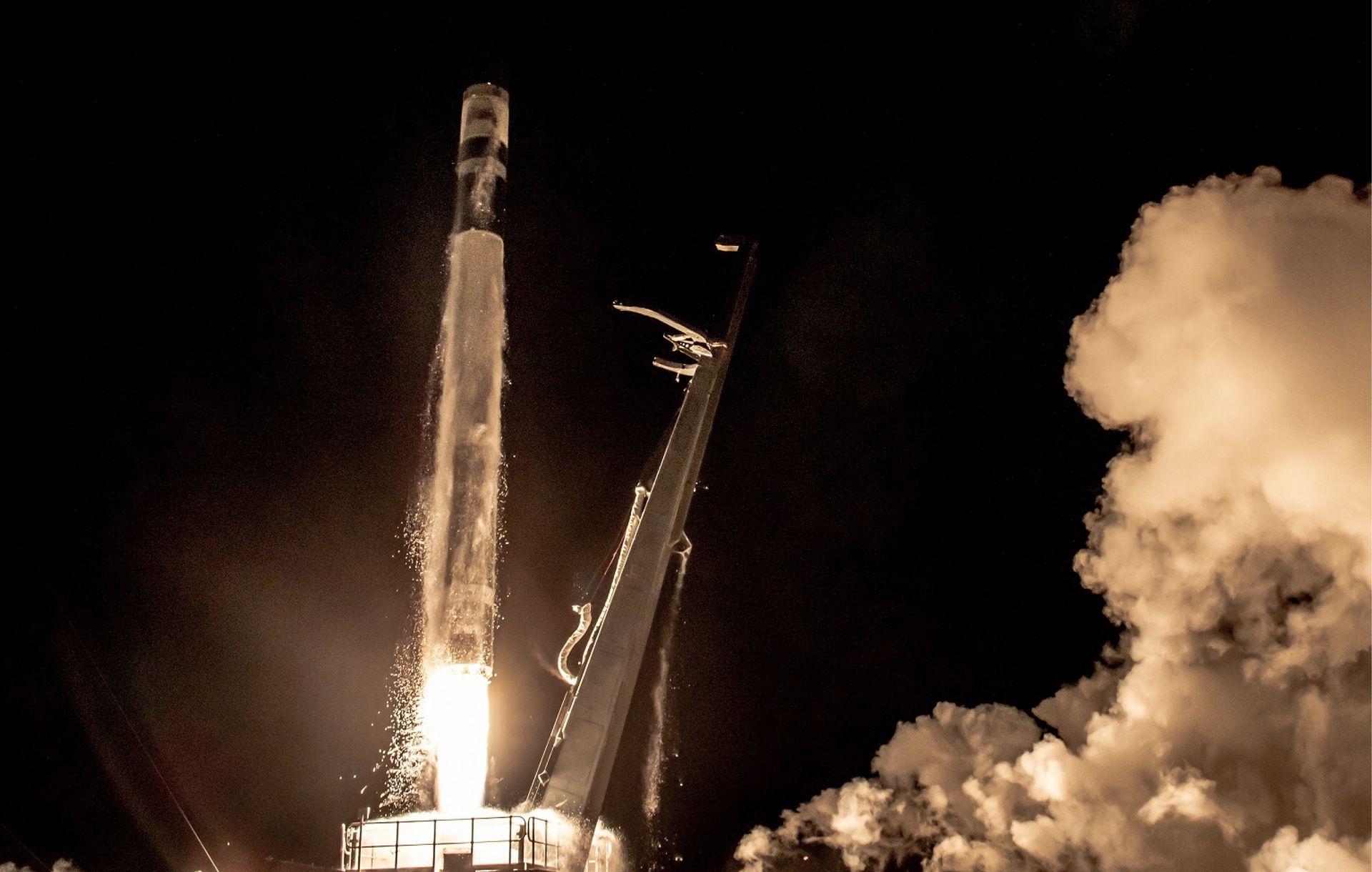
(Image: Rocket Lab)
An increasingly competitive launch market as Blue Origin prep first New Glenn launch, Rocket Lab and SpaceX break records
Last week, SpaceX conducted its sixth Starship demonstration launch, successfully placing the vehicle into sub-orbit. However, the booster failed to execute a controlled descent back to the launch pad, as it successfully did in the previous attempt. Despite this setback, the company will remain committed to its "fail fast" philosophy and is planning the next demonstration launch for January.
Validating Starship is critical to the Artemis project, as it serves as the Human Landing System (HLS) for delivering astronauts to the Moon. Additionally, SpaceX hopes to launch Starship to Mars as early as 2026, though Elon Musk's optimistic timelines should be viewed with caution. Still, SpaceX's track record of rapid development and innovation underscores its potential to meet ambitious goals.
The company also made headlines this week by breaking reusability records with its Falcon 9 rocket. Booster B1080 launched a batch of Starlink satellites less than two weeks after its previous mission. This marked SpaceX’s 374th overall booster landing, reinforcing its dominance in reusability.
Rocket Lab (US/New Zealand) also achieved a milestone with two Electron rocket launches just 21 hours apart, a company first. Firmly established as a global leader in small satellite launches, Rocket Lab has conducted 14 missions this year, surpassing its 2023 total of 10. The company is now preparing for the debut of its medium-lift, reusable Neutron rocket. Earlier this month, Rocket Lab secured its first commercial customer for the new vehicle.
Both companies face growing competition. Blue Origin’s New Glenn rocket is nearing its maiden flight, with the vehicle being erected at the launchpad last week at Cape Canaveral. The company will carry out hot fire tests before the first mission—targeted before the year’s end—will carry hardware for Blue Ring, Blue Origin’s upcoming orbital transfer vehicle (OTV).
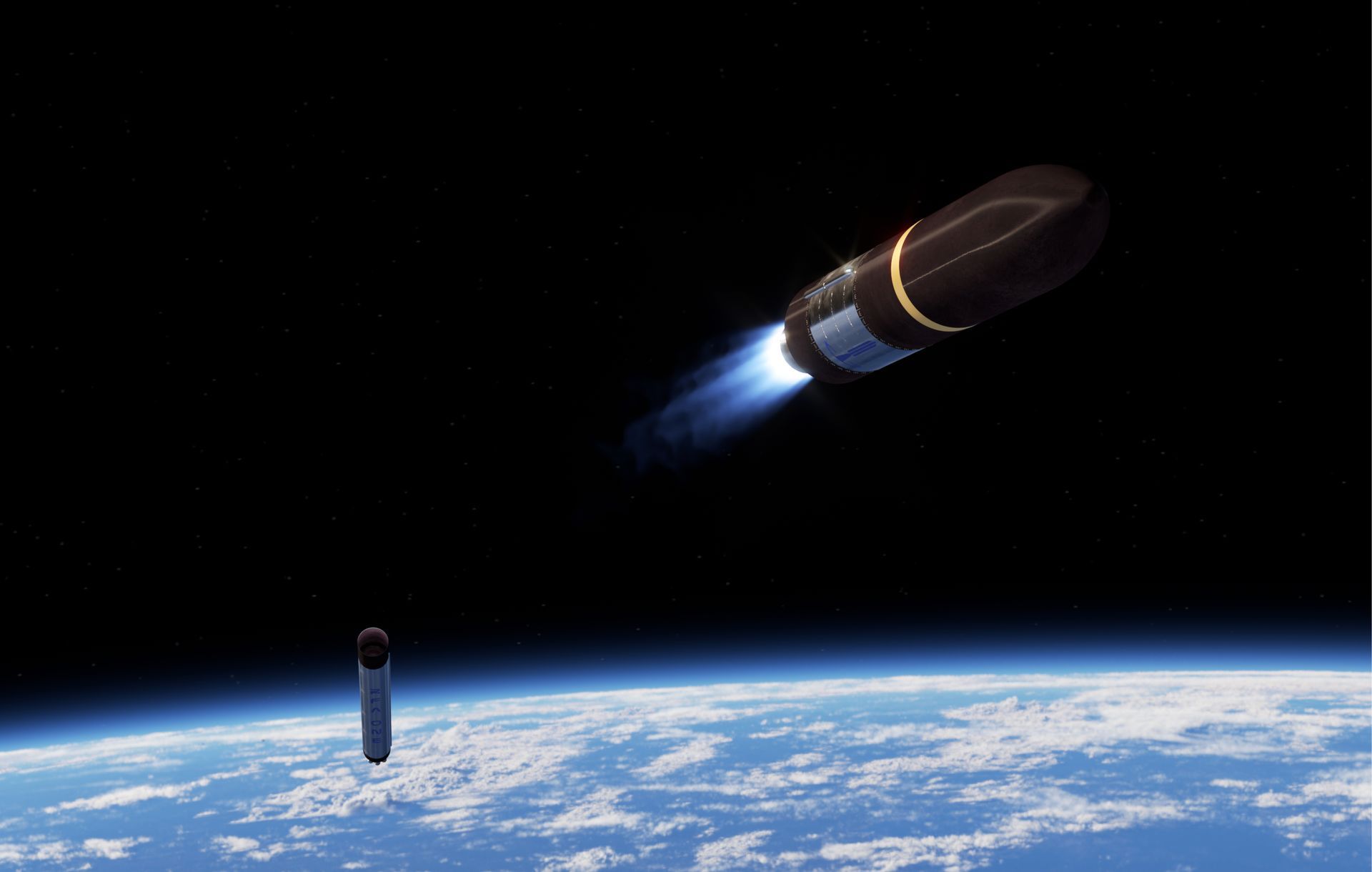
(Image: Rocket Factory Augsburg)
Europe could face opportunity to boost sovereign tech
At the start of the year, European companies appeared poised to become strong competitors in the launch market. In November 2023, ESA announced a shift to a competition-based procurement model, mirroring the U.S. approach and embracing new commercial options.
Competition fosters efficiency and cost reduction, signalling a potential end to traditional launch development strategies where agencies directly commission companies to build vehicles. This year, ESA saw the first, partially successful flight of the Ariane 6, marking progress after the “launcher crisis” forced reliance on SpaceX. At last year’s ESA summit in Seville, ESA Director General Josef Aschbacher emphasised, “something like Ariane 6... is not going to happen again,” hinting at a new era of market-driven strategies.
However, the anticipated wave of debut launches from European commercial players has yet to fully materialise. Rocket Factory Augsburg (RFA) faced setbacks in August after an explosion during a test of its RFA ONE rocket, initially slated for launch this year. Similarly, German startup Isar Aerospace aims to debut its Spectrum rocket but has not confirmed a date. Meanwhile, HyImpulse, based in Baden-Württemberg, achieved a more positive milestone with the successful test launch of its SR-75 rocket in May.
Is Europe ready to compete?
Speaking at the Space Tech Expo in Bremen last week, Kristina Vogt, senator for the economy, ports and transformation for the German state of Bremen said “it is foreseeable that our longstanding and good partner, the USA, will change its space priorities in the future,” in relation to a potential ‘America Fist’ approach that the new Trump administration may take to the space industry.
The concern centres on reduced cooperation between Europe and the U.S., but it is also seen as an opportunity to foster the growth of European technology and strengthen efforts to build a truly sovereign space infrastructure. Andreas Bovenschulte, President of the Senate and Mayor of Bremen, further cautioned against relying on politically volatile figures such as Elon Musk, emphasising that this should motivate Europe to accelerate its pace in space innovation and independence.
Europe boasts a wealth of talent in the space sector, with the European Space Agency (ESA) serving as a crucial partner in projects like Artemis and others. Additionally, European nations are witnessing the rise of their own commercial space startups. Just last week, ESA announced €44.2 million in funding to support launch startups Rocket Factory Augsburg (RFA), Isar Aerospace, HyImpulse, and the UK-based Orbex Space.
In October, Italy's Minister of Enterprise and Made in Italy, Adolfo Urso, announced plans to reopen the Luigi Broglio Space Center in Kenya, an offshore launch site that last saw its last launch in 1988. Italy remains a strong player in European space technology and is home to promising startups like D-Orbit, which develops orbital transfer vehicles (OTVs), and AIKO, specialising in AI-driven automation for space missions.
This week, Spain’s PLD Space announced a partnership with Deimos Space to develop guidance, navigation, and control systems for their Miura-5 rocket, scheduled for launch next year. PLD previously achieved success with the launch of its Miura-1 vehicle in October last year and recently revealed plans for a medium-lift rocket named “Miura Next” and a heavy-lift version called “Miura-Heavy.” Additionally, the company has ambitions to develop a crewed spacecraft, “Lince,” with a planned launch in 2030
Europe is steadily advancing toward establishing its own reusable launch technology, a critical factor for achieving the cost-efficiency that has defined SpaceX’s global leadership. PLD Space plans to demonstrate reusability with the introduction of its Miura-5 rocket, while many other European launch startups are incorporating reusable components into their designs. This week, ArianeGroup announced two new contracts with ESA to advance rocket reusability, building on the successful test of their Prometheus engine. ArianeGroup is also preparing for a “hop test” of the engine at the Esrange Space Center in Kiruna, Sweden.
————————-
Shifting political and international dynamics may challenge Europe’s space sector but also offer opportunities for revitalisation and investment. As access to space grows worldwide, space technology is advancing goals like the Sustainable Development Goals (SDGs). However, challenges remain, including resource exploitation, inequitable access, and outdated legal frameworks. For Europe, this is a chance to boost independence, drive economic growth, and lead efforts to ensure the fair and sustainable use of outer space for current and future generations.

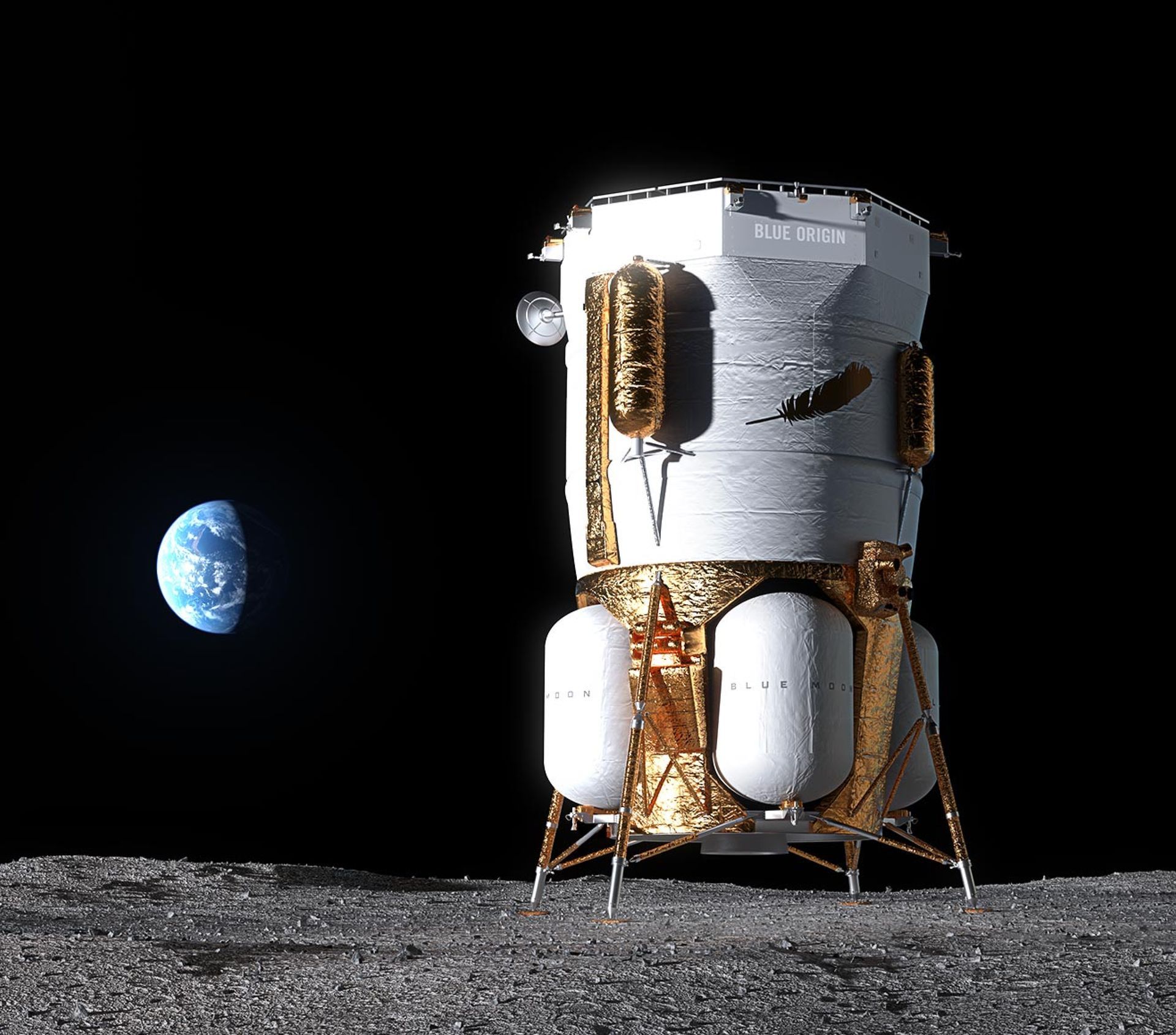
(Image Render: Blue Origin)
29 November 2024
NASA Lunar Cargo Awards, a Possible Commercial Lunar Race (again) and Europe’s Chance to Increase Competitive Edge - Space News Roundup

NASA has made significant strides toward establishing a sustained lunar presence under its Artemis program, recently announcing plans to use cargo landers from Blue Origin and SpaceX to deliver rovers and infrastructure to the Moon. These missions, targeted for the 2030s, build on existing contracts with both companies. Blue Origin’s Blue Moon lander and a modified version of SpaceX’s Starship—also slated to serve as the Human Landing System for Artemis III—will transport large payloads to the lunar surface, supporting the long-term goals of the program.
As part of these plans, SpaceX is expected to deliver a pressurised rover from JAXA (the Japanese Space Agency) no sooner than 2032. This rover is believed to be the Lunar Cruiser, currently being developed by Toyota for the Artemis program. Blue Origin is slated to deliver a surface habitat, no sooner than 2023.
In related news, Lunar Outpost announced it has chosen SpaceX to launch its “Eagle” lunar rovers to the Moon aboard Starship. Lunar Outpost leads one of three teams selected by NASA to develop a Lunar Terrain Vehicle (LTV), an updated version of the Lunar Roving Vehicle used in the Apollo missions. While only one team will be selected to fully develop the LTV for Artemis, Lunar Outpost plans to continue developing its vehicles regardless.
Just as NASA is purchasing lunar landing services from commercial partners rather than developing its own, the agency is also working with private companies to secure lunar surface mobility solutions.
A new lunar race in 2025?
At the start of this year, lunar exploration reached a pivotal moment as commercial companies Intuitive Machines and Astrobotic competed to become the first private entity to land on the Moon. Astrobotic’s Peregrine lander launched on January 8, aiming for a February landing. Intuitive Machines’ Nova-C lander launched later, on February 5, but took a shorter trajectory, setting up a potential head-to-head landing within days.
However, a propellant leak shortly after launch caused Astrobotic’s mission to last only 10 days before the spacecraft was returned to Earth and destroyed during reentry. Intuitive Machines, on the other hand, marked a milestone in commercial lunar exploration by successfully landing its IM-1 mission on February 22. Just weeks earlier, JAXA became the fifth nation to achieve a soft lunar landing with its SLIM lander.
These achievements sparked renewed enthusiasm for cost-effective lunar transport, demonstrating technological progress and significant steps toward developing permanent infrastructure on the Moon.
In early 2025, a similar competition may unfold, with Firefly Aerospace (US), iSpace (Japan), and Intuitive Machines all planning to launch commercial landers.
Firefly - Blue Ghost 1
Firefly, an end-to-end space services provider, are looking to launch their Blue Ghost 1 lander in mid-January, carrying 10 NASA payloads and are contracted under their Commercial Lunar Payloads Services programme (CLPS). After launch it will spend approximately 45 days travelling to the Moon, where it will land on the northeastern quadrant of the near-side of the Moon.
iSpace - RESILIENCE
iSpace are set to launch their RESILIENCE lander, along with their TENACIOUS lunar rover, in January 2025. It’s unclear how long the journey might take, but could potentially also take a longer trajectory, similar to their Mission 1 attempt, which crash landed in April 2023. It is due to land in the Moon’s northern hemisphere, where it can benefit from ‘continuous sun-illumination duration and communication visibility from the Earth.’
Intuitive Machines - IM-2
The pioneering lunar services company are set launch their second mission no sooner than February 2025, but will take a more direct route to the Moon, lining it up for a potential race with Firefly and iSpace. The mission is also contracted under NASA CLPS and will carry PRIME-1 as their primary payload. This will utilise a drill named TRDENT to sample ice beneath the surface.
An increasingly competitive launch market as Blue Origin prep first New Glenn launch, Rocket Lab and SpaceX break records
Last week, SpaceX conducted its sixth Starship demonstration launch, successfully placing the vehicle into sub-orbit. However, the booster failed to execute a controlled descent back to the launch pad, as it successfully did in the previous attempt. Despite this setback, the company will remain committed to its "fail fast" philosophy and is planning the next demonstration launch for January.
Validating Starship is critical to the Artemis project, as it serves as the Human Landing System (HLS) for delivering astronauts to the Moon. Additionally, SpaceX hopes to launch Starship to Mars as early as 2026, though Elon Musk's optimistic timelines should be viewed with caution. Still, SpaceX's track record of rapid development and innovation underscores its potential to meet ambitious goals.
The company also made headlines this week by breaking reusability records with its Falcon 9 rocket. Booster B1080 launched a batch of Starlink satellites less than two weeks after its previous mission. This marked SpaceX’s 374th overall booster landing, reinforcing its dominance in reusability.
Rocket Lab (US/New Zealand) also achieved a milestone with two Electron rocket launches just 21 hours apart, a company first. Firmly established as a global leader in small satellite launches, Rocket Lab has conducted 14 missions this year, surpassing its 2023 total of 10. The company is now preparing for the debut of its medium-lift, reusable Neutron rocket. Earlier this month, Rocket Lab secured its first commercial customer for the new vehicle.
Both companies face growing competition. Blue Origin’s New Glenn rocket is nearing its maiden flight, with the vehicle being erected at the launchpad last week at Cape Canaveral. The company will carry out hot fire tests before the first mission—targeted before the year’s end—will carry hardware for Blue Ring, Blue Origin’s upcoming orbital transfer vehicle (OTV).
Europe could face opportunity to boost sovereign tech
At the start of the year, European companies appeared poised to become strong competitors in the launch market. In November 2023, ESA announced a shift to a competition-based procurement model, mirroring the U.S. approach and embracing new commercial options.
Competition fosters efficiency and cost reduction, signalling a potential end to traditional launch development strategies where agencies directly commission companies to build vehicles. This year, ESA saw the first, partially successful flight of the Ariane 6, marking progress after the “launcher crisis” forced reliance on SpaceX. At last year’s ESA summit in Seville, ESA Director General Josef Aschbacher emphasised, “something like Ariane 6... is not going to happen again,” hinting at a new era of market-driven strategies.
However, the anticipated wave of debut launches from European commercial players has yet to fully materialise. Rocket Factory Augsburg (RFA) faced setbacks in August after an explosion during a test of its RFA ONE rocket, initially slated for launch this year. Similarly, German startup Isar Aerospace aims to debut its Spectrum rocket but has not confirmed a date. Meanwhile, HyImpulse, based in Baden-Württemberg, achieved a more positive milestone with the successful test launch of its SR-75 rocket in May.
Is Europe ready to compete?
Speaking at the Space Tech Expo in Bremen last week, Kristina Vogt, senator for the economy, ports and transformation for the German state of Bremen said “it is foreseeable that our longstanding and good partner, the USA, will change its space priorities in the future,” in relation to a potential ‘America Fist’ approach that the new Trump administration may take to the space industry.
The concern centres on reduced cooperation between Europe and the U.S., but it is also seen as an opportunity to foster the growth of European technology and strengthen efforts to build a truly sovereign space infrastructure. Andreas Bovenschulte, President of the Senate and Mayor of Bremen, further cautioned against relying on politically volatile figures such as Elon Musk, emphasising that this should motivate Europe to accelerate its pace in space innovation and independence.
Europe boasts a wealth of talent in the space sector, with the European Space Agency (ESA) serving as a crucial partner in projects like Artemis and others. Additionally, European nations are witnessing the rise of their own commercial space startups. Just last week, ESA announced €44.2 million in funding to support launch startups Rocket Factory Augsburg (RFA), Isar Aerospace, HyImpulse, and the UK-based Orbex Space.
In October, Italy's Minister of Enterprise and Made in Italy, Adolfo Urso, announced plans to reopen the Luigi Broglio Space Center in Kenya, an offshore launch site that last saw its last launch in 1988. Italy remains a strong player in European space technology and is home to promising startups like D-Orbit, which develops orbital transfer vehicles (OTVs), and AIKO, specialising in AI-driven automation for space missions.
This week, Spain’s PLD Space announced a partnership with Deimos Space to develop guidance, navigation, and control systems for their Miura-5 rocket, scheduled for launch next year. PLD previously achieved success with the launch of its Miura-1 vehicle in October last year and recently revealed plans for a medium-lift rocket named “Miura Next” and a heavy-lift version called “Miura-Heavy.” Additionally, the company has ambitions to develop a crewed spacecraft, “Lince,” with a planned launch in 2030
Europe is steadily advancing toward establishing its own reusable launch technology, a critical factor for achieving the cost-efficiency that has defined SpaceX’s global leadership. PLD Space plans to demonstrate reusability with the introduction of its Miura-5 rocket, while many other European launch startups are incorporating reusable components into their designs. This week, ArianeGroup announced two new contracts with ESA to advance rocket reusability, building on the successful test of their Prometheus engine. ArianeGroup is also preparing for a “hop test” of the engine at the Esrange Space Center in Kiruna, Sweden.
————————-
Shifting political and international dynamics may challenge Europe’s space sector but also offer opportunities for revitalisation and investment. As access to space grows worldwide, space technology is advancing goals like the Sustainable Development Goals (SDGs). However, challenges remain, including resource exploitation, inequitable access, and outdated legal frameworks. For Europe, this is a chance to boost independence, drive economic growth, and lead efforts to ensure the fair and sustainable use of outer space for current and future generations.
Share this article


29 November 2024
NASA Lunar Cargo Awards, a Possible Commercial Lunar Race (again) and Europe’s Chance to Increase Competitive Edge - Space News Roundup


(Image: Blue Origin)
NASA has made significant strides toward establishing a sustained lunar presence under its Artemis program, recently announcing plans to use cargo landers from Blue Origin and SpaceX to deliver rovers and infrastructure to the Moon. These missions, targeted for the 2030s, build on existing contracts with both companies. Blue Origin’s Blue Moon lander and a modified version of SpaceX’s Starship—also slated to serve as the Human Landing System for Artemis III—will transport large payloads to the lunar surface, supporting the long-term goals of the program.
As part of these plans, SpaceX is expected to deliver a pressurised rover from JAXA (the Japanese Space Agency) no sooner than 2032. This rover is believed to be the Lunar Cruiser, currently being developed by Toyota for the Artemis program. Blue Origin is slated to deliver a surface habitat, no sooner than 2023.
In related news, Lunar Outpost announced it has chosen SpaceX to launch its “Eagle” lunar rovers to the Moon aboard Starship. Lunar Outpost leads one of three teams selected by NASA to develop a Lunar Terrain Vehicle (LTV), an updated version of the Lunar Roving Vehicle used in the Apollo missions. While only one team will be selected to fully develop the LTV for Artemis, Lunar Outpost plans to continue developing its vehicles regardless.
Just as NASA is purchasing lunar landing services from commercial partners rather than developing its own, the agency is also working with private companies to secure lunar surface mobility solutions.
A new lunar race in 2025?
At the start of this year, lunar exploration reached a pivotal moment as commercial companies Intuitive Machines and Astrobotic competed to become the first private entity to land on the Moon. Astrobotic’s Peregrine lander launched on January 8, aiming for a February landing. Intuitive Machines’ Nova-C lander launched later, on February 5, but took a shorter trajectory, setting up a potential head-to-head landing within days.
However, a propellant leak shortly after launch caused Astrobotic’s mission to last only 10 days before the spacecraft was returned to Earth and destroyed during reentry. Intuitive Machines, on the other hand, marked a milestone in commercial lunar exploration by successfully landing its IM-1 mission on February 22. Just weeks earlier, JAXA became the fifth nation to achieve a soft lunar landing with its SLIM lander.
These achievements sparked renewed enthusiasm for cost-effective lunar transport, demonstrating technological progress and significant steps toward developing permanent infrastructure on the Moon.
In early 2025, a similar competition may unfold, with Firefly Aerospace (US), iSpace (Japan), and Intuitive Machines all planning to launch commercial landers.
Firefly - Blue Ghost 1
Firefly, an end-to-end space services provider, are looking to launch their Blue Ghost 1 lander in mid-January, carrying 10 NASA payloads and are contracted under their Commercial Lunar Payloads Services programme (CLPS). After launch it will spend approximately 45 days travelling to the Moon, where it will land on the northeastern quadrant of the near-side of the Moon.
iSpace - RESILIENCE
iSpace are set to launch their RESILIENCE lander, along with their TENACIOUS lunar rover, in January 2025. It’s unclear how long the journey might take, but could potentially also take a longer trajectory, similar to their Mission 1 attempt, which crash landed in April 2023. It is due to land in the Moon’s northern hemisphere, where it can benefit from ‘continuous sun-illumination duration and communication visibility from the Earth.’
Intuitive Machines - IM-2
The pioneering lunar services company are set launch their second mission no sooner than February 2025, but will take a more direct route to the Moon, lining it up for a potential race with Firefly and iSpace. The mission is also contracted under NASA CLPS and will carry PRIME-1 as their primary payload. This will utilise a drill named TRDENT to sample ice beneath the surface.
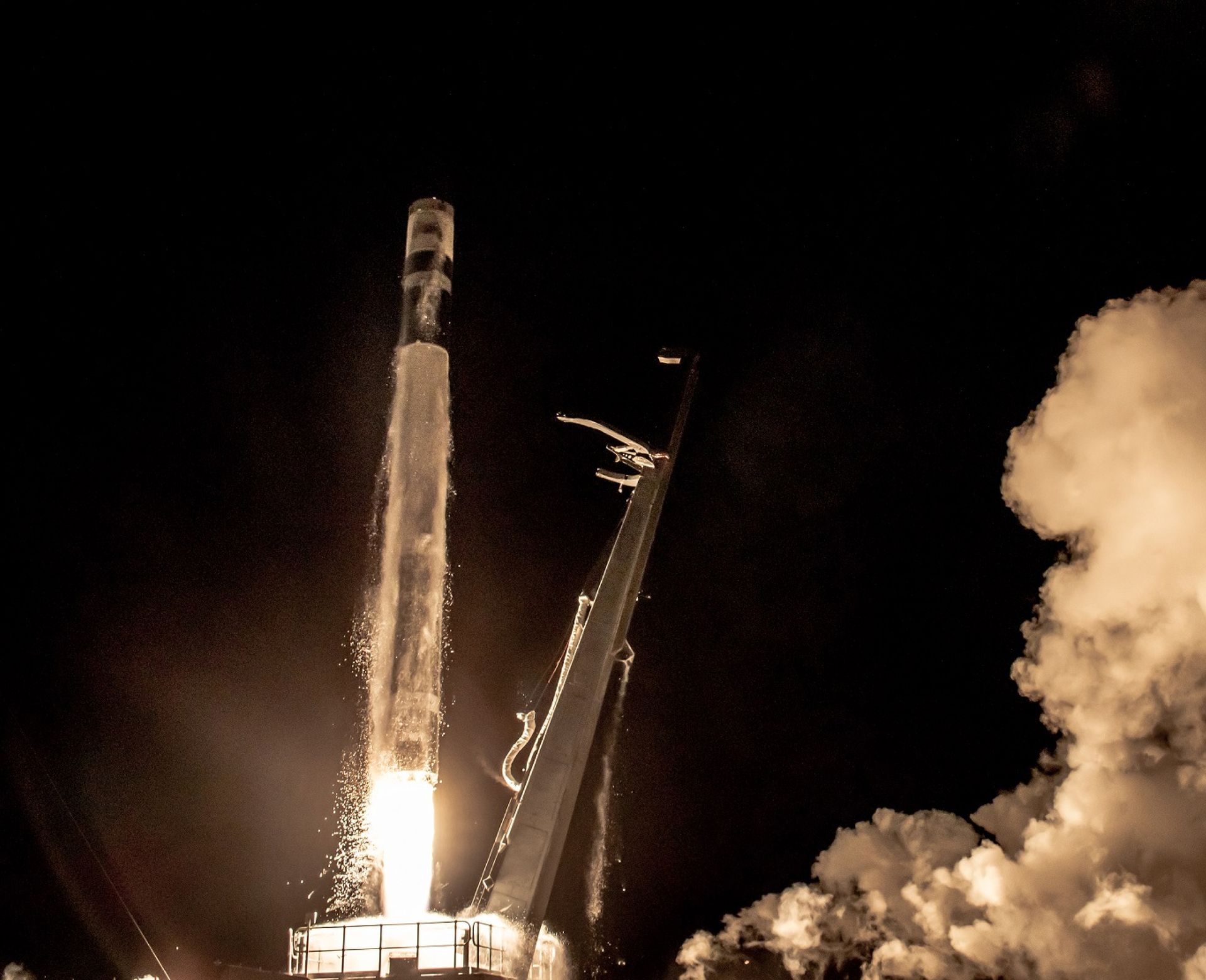
(Image: Rocket Lab)
An increasingly competitive launch market as Blue Origin prep first New Glenn launch, Rocket Lab and SpaceX break records
Last week, SpaceX conducted its sixth Starship demonstration launch, successfully placing the vehicle into sub-orbit. However, the booster failed to execute a controlled descent back to the launch pad, as it successfully did in the previous attempt. Despite this setback, the company will remain committed to its "fail fast" philosophy and is planning the next demonstration launch for January.
Validating Starship is critical to the Artemis project, as it serves as the Human Landing System (HLS) for delivering astronauts to the Moon. Additionally, SpaceX hopes to launch Starship to Mars as early as 2026, though Elon Musk's optimistic timelines should be viewed with caution. Still, SpaceX's track record of rapid development and innovation underscores its potential to meet ambitious goals.
The company also made headlines this week by breaking reusability records with its Falcon 9 rocket. Booster B1080 launched a batch of Starlink satellites less than two weeks after its previous mission. This marked SpaceX’s 374th overall booster landing, reinforcing its dominance in reusability.
Rocket Lab (US/New Zealand) also achieved a milestone with two Electron rocket launches just 21 hours apart, a company first. Firmly established as a global leader in small satellite launches, Rocket Lab has conducted 14 missions this year, surpassing its 2023 total of 10. The company is now preparing for the debut of its medium-lift, reusable Neutron rocket. Earlier this month, Rocket Lab secured its first commercial customer for the new vehicle.
Both companies face growing competition. Blue Origin’s New Glenn rocket is nearing its maiden flight, with the vehicle being erected at the launchpad last week at Cape Canaveral. The company will carry out hot fire tests before the first mission—targeted before the year’s end—will carry hardware for Blue Ring, Blue Origin’s upcoming orbital transfer vehicle (OTV).
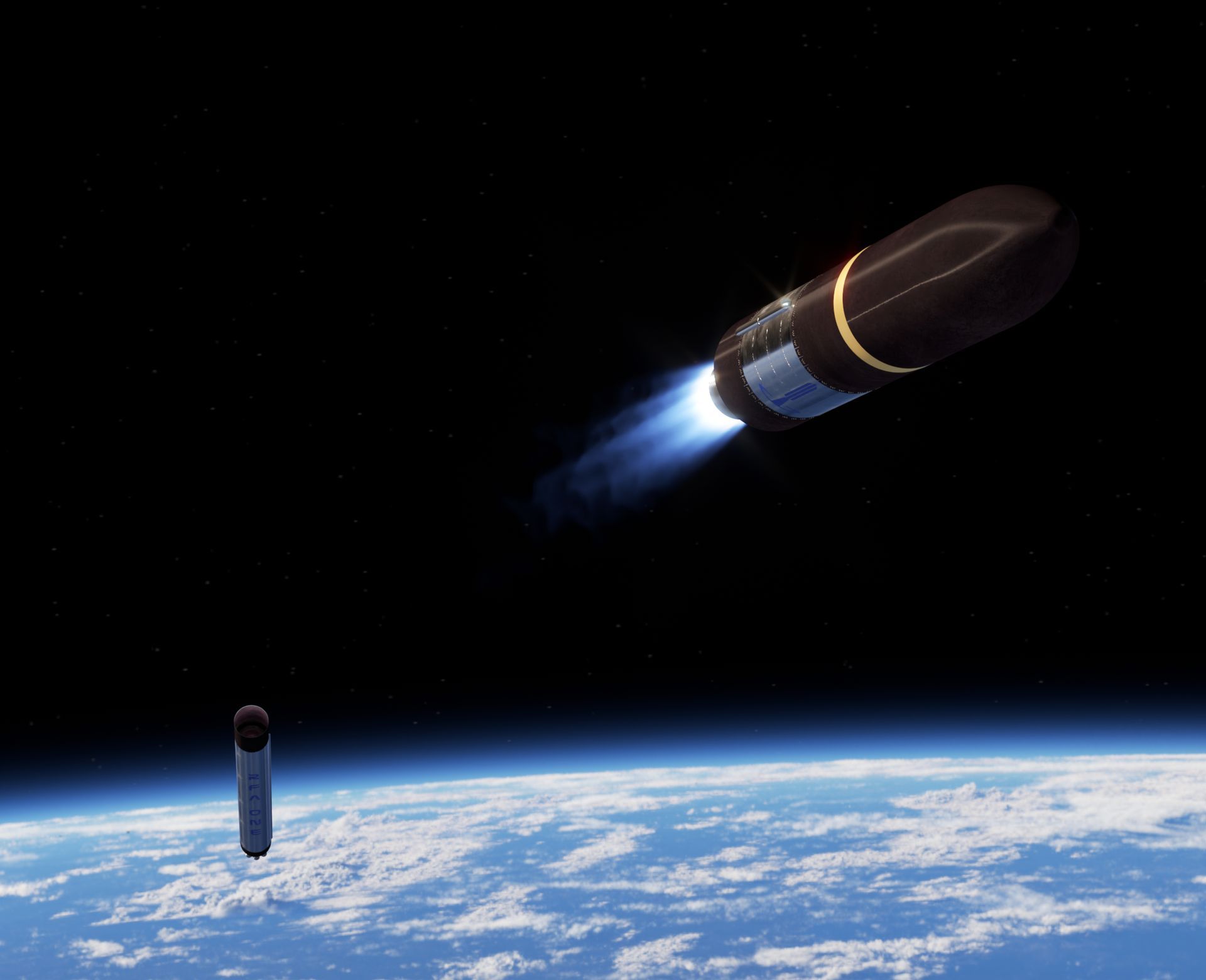
(Image: Rocket Factory Augsburg)
Europe could face opportunity to boost sovereign tech
At the start of the year, European companies appeared poised to become strong competitors in the launch market. In November 2023, ESA announced a shift to a competition-based procurement model, mirroring the U.S. approach and embracing new commercial options.
Competition fosters efficiency and cost reduction, signalling a potential end to traditional launch development strategies where agencies directly commission companies to build vehicles. This year, ESA saw the first, partially successful flight of the Ariane 6, marking progress after the “launcher crisis” forced reliance on SpaceX. At last year’s ESA summit in Seville, ESA Director General Josef Aschbacher emphasised, “something like Ariane 6... is not going to happen again,” hinting at a new era of market-driven strategies.
However, the anticipated wave of debut launches from European commercial players has yet to fully materialise. Rocket Factory Augsburg (RFA) faced setbacks in August after an explosion during a test of its RFA ONE rocket, initially slated for launch this year. Similarly, German startup Isar Aerospace aims to debut its Spectrum rocket but has not confirmed a date. Meanwhile, HyImpulse, based in Baden-Württemberg, achieved a more positive milestone with the successful test launch of its SR-75 rocket in May.
Is Europe ready to compete?
Speaking at the Space Tech Expo in Bremen last week, Kristina Vogt, senator for the economy, ports and transformation for the German state of Bremen said “it is foreseeable that our longstanding and good partner, the USA, will change its space priorities in the future,” in relation to a potential ‘America Fist’ approach that the new Trump administration may take to the space industry.
The concern centres on reduced cooperation between Europe and the U.S., but it is also seen as an opportunity to foster the growth of European technology and strengthen efforts to build a truly sovereign space infrastructure. Andreas Bovenschulte, President of the Senate and Mayor of Bremen, further cautioned against relying on politically volatile figures such as Elon Musk, emphasising that this should motivate Europe to accelerate its pace in space innovation and independence.
Europe boasts a wealth of talent in the space sector, with the European Space Agency (ESA) serving as a crucial partner in projects like Artemis and others. Additionally, European nations are witnessing the rise of their own commercial space startups. Just last week, ESA announced €44.2 million in funding to support launch startups Rocket Factory Augsburg (RFA), Isar Aerospace, HyImpulse, and the UK-based Orbex Space.
In October, Italy's Minister of Enterprise and Made in Italy, Adolfo Urso, announced plans to reopen the Luigi Broglio Space Center in Kenya, an offshore launch site that last saw its last launch in 1988. Italy remains a strong player in European space technology and is home to promising startups like D-Orbit, which develops orbital transfer vehicles (OTVs), and AIKO, specialising in AI-driven automation for space missions.
This week, Spain’s PLD Space announced a partnership with Deimos Space to develop guidance, navigation, and control systems for their Miura-5 rocket, scheduled for launch next year. PLD previously achieved success with the launch of its Miura-1 vehicle in October last year and recently revealed plans for a medium-lift rocket named “Miura Next” and a heavy-lift version called “Miura-Heavy.” Additionally, the company has ambitions to develop a crewed spacecraft, “Lince,” with a planned launch in 2030
Europe is steadily advancing toward establishing its own reusable launch technology, a critical factor for achieving the cost-efficiency that has defined SpaceX’s global leadership. PLD Space plans to demonstrate reusability with the introduction of its Miura-5 rocket, while many other European launch startups are incorporating reusable components into their designs. This week, ArianeGroup announced two new contracts with ESA to advance rocket reusability, building on the successful test of their Prometheus engine. ArianeGroup is also preparing for a “hop test” of the engine at the Esrange Space Center in Kiruna, Sweden.
————————-
Shifting political and international dynamics may challenge Europe’s space sector but also offer opportunities for revitalisation and investment. As access to space grows worldwide, space technology is advancing goals like the Sustainable Development Goals (SDGs). However, challenges remain, including resource exploitation, inequitable access, and outdated legal frameworks. For Europe, this is a chance to boost independence, drive economic growth, and lead efforts to ensure the fair and sustainable use of outer space for current and future generations.
Share this article


